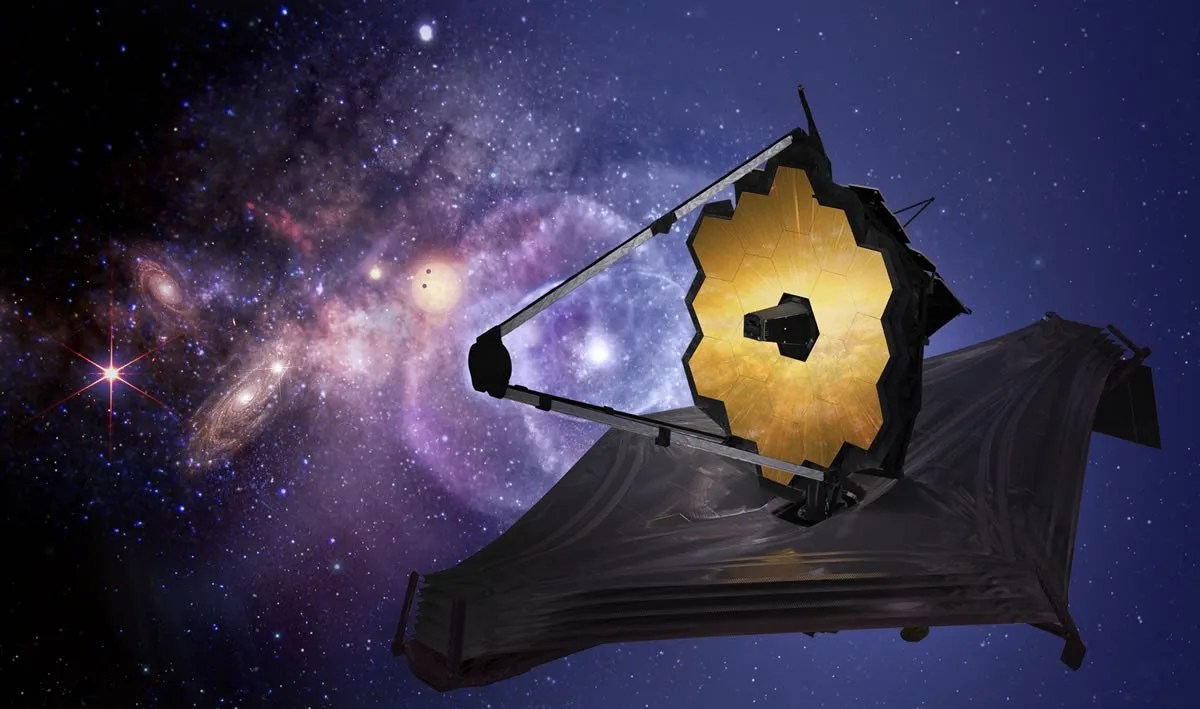INFORMAL: Lesson Plans, Activities, Resources & Programs
- NASA Space Place: What is the James Webb Space Telescope - NASA Space Place is a site about space and Earth science for upper elementary aged children.
- NASA STEM Toolkit for Webb - Resources, activities, videos and more for educators on Webb and associated science topics.
- Seeing Starlight with the James Webb Space Telescope (pdf) – A hands on activity to learn about the life cycles of stars. Produced by Mad Science in collaboration with the National Institute of Aerospace and in coordination with NASA’s Goddard Space Flight Center. Appropriate for elementary and middle school grades. View a virtual event with Dr. Quyen Hart from the Space Telescope Science Institute that will run through this hands on activity.
- Life Cycle Of a Massive Star Activity - String beads on a bookmark to represent the stages a massive star goes through during its life cycle: Bookmark (pdf) and Activity (pdf).
- Build-It-Yourself: Satellite! - An educational game for high school and college age students, where they get to be the scientist by building their own satellite. Approved by the NASA Education Product review.
- Scope It Out! - An educational game for middle and high school students, which compares a simple telescope to both the James Webb Space Telescope and the Hubble Space Telescope. Approved by the NASA Education Product review. Lesson plans available.
- Smithsonian's National Air & Space Museum - Exploring Telescopes Discovery Station (pdf) - A set of telescope-themed activities designed for the informal-education setting. Features the James Webb Space Telescope, and includes contributions by educators Ryan Hannahoe and Peter Detterline.
- Webb Telescope Fun Pad (pdf) - a fun pad of activities for children ages 5-10, as well as basic information about the telescope.
INFORMAL: From Our Partner Institutions
- Webb coloring page (.pdf) - A picture of Web, from Ball Aerospace, that can be printed out and colored in.
FORMAL: Lesson Plans, Activities & Programs
- High School Experiments in Infrared Astronomy (pdf) - By Sten Odenwald/SpaceMath@NASA This book supports the James Webb Space Telescope and is designed for high school students exploring infrared light and how astronomers use it to investigate a variety of objects. Format: 115 pages, 12 experiments, 29 math problems, 66 illustrations, 2.8 Mb
- Scope It Out! - An educational game for middle and high school students, which compares a simple telescope to both the James Webb Space Telescope and the Hubble Space Telescope. Approved by the NASA Education Product review. Lesson plans available.
- Build-It-Yourself: Satellite! - An educational game for high school and college age students, where they get to be the scientist by building their own satellite. Approved by the NASA Education Product review.
- Space Math @ NASA - Visit this NASA resource to download hundreds of math problems for grades K12 featuring a behind the scenes look at NASA press releases and discoveries. The problems range from simple scaling and proportions to algebra and calculus, and cover topics spanning all NASA science and engineering activities. Here are the Space Math problems that use the James Webb Space Telescope: http://spacemath.gsfc.nasa.gov/mission.html#Webb A few are below.
- Detecting the Most Distant Supernova in the Universe (.pdf) - Students use a graph to compare the brightness of supernova produced by three different masses of stars, and predict whether the Webb Space Telescope can see them. [Grade: 6-8 | Topics: Analyzing a graph; interpreting mathematical models]
- Exploring the Cosmos with Supercomputers (.pdf) - Students use two images created by a supercomputer calculation to explore the size and accuracy of computer models of the distant universe. [Grade: 7-9 | Topics: scale model; proportions; Scientific Notation]
- Seeing the Distant Universe Clearly (.pdf) - Students calculate the angular sizes and scales of distant objects to study how different sized telescopes see details with varying degrees of clarity. [Grade: 7-9 | Topics: solving a simple equation for X; angular measure; Scientific Notation]
- The Cosmological Redshift - Changing the light from a galaxy (.pdf) - Students learn about the redshift unit of measurement in astronomy, and solve a simple linear equation to explore how the light from very distant galaxies is reddened compared to nearby galaxies. [Grade: 8-10 | Topics: solving a simple equation for X]
- STEM module featuring Webb. Students will learn about the technology of cryogenics where engineers and scientists work with very cold gases and liquids. They will use a simple equation to convert from the Fahrenheit to the Celsius temperature scales and to the Kelvin scale which is used in cryogenics. They will also view a NASA eClips video and read a press release dealing with very cold gases and liquids.
FORMAL: From Our Partner Institutions
- Taking a Closer Look: Examining Light and Telescopes (.pdf) - A program of activities appropriate for grades 3-9, from Northrop Grumman, which can be presented in approximately 1 hour. Students explore how lenses gather and focus light by examining images using magnifying glasses and telescopes.
More Resources
- Space Place: A set of web-based activities, games, crafts, information and learning activities from the NASA's Jet Propulsion Lab made available for all to enjoy.
- Cool Cosmos: Learn more about infrared light, astronomy, and the world around us. Spectacular images, fun games, resources for educators, and more!
- StarChild: Cosmology/Big Bang information (For K-6: Level 1, Level 2.)
- ESA Kids

